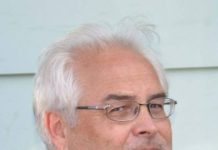By John Francis
As Canada’s ambassador to the United Nations, Bob Rae, has been heard to say: “The only problem with Canada is that people expect European service levels and American tax rates.”
Hard to argue with that observation. The argument comes when you try to balance that equation — do you reduce service levels or increase taxes?
Municipal governance has changed a great deal over the decades. Unfortunately that means it has never stayed the same for long enough to develop an equilibrium.
In the 70s and 80s, Canada and its provinces discovered the joys of deficit budgeting — the Trudeau and Mulroney governments were like a teenager discovering the magic of long-term car loans and coming home with a brand-new BMW. Except the BMW those governments came home with was mostly infrastructure. A lot of our roads, bridges, sewage treatment plants, hydro projects, history books and so much more were built in that era. Much of that infrastructure was built for, or subsequently handed to, municipalities.
Municipal taxes tended to be low during that era — with the feds and the provinces paying for everything, municipalities only needed to keep the lights on.
Realizing that the deficits were unsustainable, the Chretien and Harper governments turned off the taps. This has had two results: not much has been built in the last 30 years and a lot of our older infrastructure — national, provincial and local — is getting, well, older.
But municipal tax rates are still stuck in the “don’t worry, the feds are gonna pay for it” mind-set. Sensing that this was unsustainable, the McGuinty and Wynn governments mandated that all municipalities must do an inventory of municipal assets and create an Asset Management Plan.
This sounds tiresome and bureaucratic (OK, it is tiresome and bureaucratic) but it was an important and quite sensible idea. To their credit, the Ford government has continued to implement the program and it’s really starting to bear fruit. Unfortunately, that “fruit” comes in the form of messages people don’t want to hear.
As our Mayor pointed out at a recent St Edmunds Property Owners Annual Meeting, the Province has documented that municipalities are not putting away enough in reserves to cover the cost of maintaining and replacing their infrastructure.
Roads, bridges, arenas, community buildings, sidewalks, recreational infrastructure — many of them were built with help from the feds and the province, help that has dwindled steadily in recent decades.
The provincially mandated Asset Management Plans lay it out in black and white — how much each municipality’s infrastructure would cost to replace and how much they should be putting aside for maintenance and replacement. Asset Management Plans make it plain that almost nobody is putting enough away in reserves.
But it’s actually much worse than that. With the population of both Canada and Ontario up by nearly 50% since Chretien was elected in 1993, the infrastructure from the spending spree era is not only old and decrepit, it’s also too small for the current population. Municipalities need to build more and bigger infrastructure just to maintain the same service levels.
MNBP has a further complication to this equation — tourism. With more and more visitors coming, it’s getting steadily more expensive to offer bylaw enforcement and emergency services among others.
So how do you square this circle?
We added paid parking some years ago in an effort to defray some tourism-related expenses. The system works well, but it doesn’t come close to covering the cost of tourism. So they added a Municipal Accommodation Tax of 4% on Short-Term Accommodations, then extended it to hotels, motels and B&Bs. (Digression: Toronto just increased its MAT to 8.5% to cover the cost of hosting FIFA next year. Hmmm.)
But paid parking and the MAT are nowhere near enough to cover the cost of tourism, let alone build the infrastructure we need.
So how would a municipality raise more money? Do you charge a development fee and make newcomers pay for the new infrastructure? That sounds like a great idea until you realize that it makes it harder for young people to settle in our community.
Bruce County has implemented a development charge but MNBP (wisely, in my opinion) decided not to make things worse for our workers by adding another one. Instead, Council made the courageous decision to raise taxes by 4% just to add to our reserves.
This sounds tiresome, bureaucratic and expensive. OK, it really is tiresome, bureaucratic and expensive.
But it’s the only way we’re going to get the community facilities and resources we need. The province and the feds have problems of their own to solve. We’re going to need to do this ourselves.
Good job, Council!











